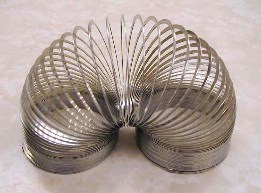| Children are frequently not even allowed to decide who their dolls are because the dolls are constrained to be Snoopy or Mickey Mouse or Superman. A lot of thought and effort has gone into how to make toys cheaply, and into increasing their safety, but the effort and cost of making them aesthetically satisfying and precious has been woefully and damagingly sacrificed. | combine with reason toward finding solutions and conducting experiments. In the people sciences and in social studies, aesthetics can perhaps be even more decisive in arriving at correct descriptions. Surely, in the use and choice of words, one can frequently be governed more appropriately by the aesthetics of language than by the rules of grammar (although the grammar need not be incompatible with the art). The integration of art with the overall curriculum. does not necessarily mean that works of artists be introduced into every class, although in some instances it may be delightful and instructive to do so. Instruction in art should begin at all levels and situations by making people aware of the aesthetic experience and by allowing such experiences to dominate what happens in all manner of choices; for, unless aesthetic considerations are allowed to influence decisions regarding behavior and thought and design, there can be no sustained conviction that art is important. Art is much more than making sure that we have decorated the walls and the packages. Furthermore, although it is true that art can, as can conversation, serve as a vehicle for therapeutic self-expression, both art and conversation also serve the much more powerful role of affecting the way we think and live and believe. | ||
 | |||
| To a large extent, the same criticism can be labeled against the instructional materials, including books and maps, that are designed for the school classroom. Even some of the more enlightened curriculum development projects in science, math, and social studies have subordinated aesthetic considerations to the economy of mass availability. Perhaps the process was not as much subordination as it was negligence. It may never have occurred to the people who designed the material that the aesthetics of the learning experience could decisively influence attitudes toward and interest in learning. The discussion and the line of thought that I have been pursuing lead toward the conclusion that along with the implementation of curricula for art instruction, one must become more aware of and more actively involved in nuturing the role of aesthetic considerations in bringing up children and in providing the props of their pleasure and instruction as respected criteria for their decision making. Even in the so-called "hard" sciences, such as physics, the finest progress is made only when aesthetics | |||